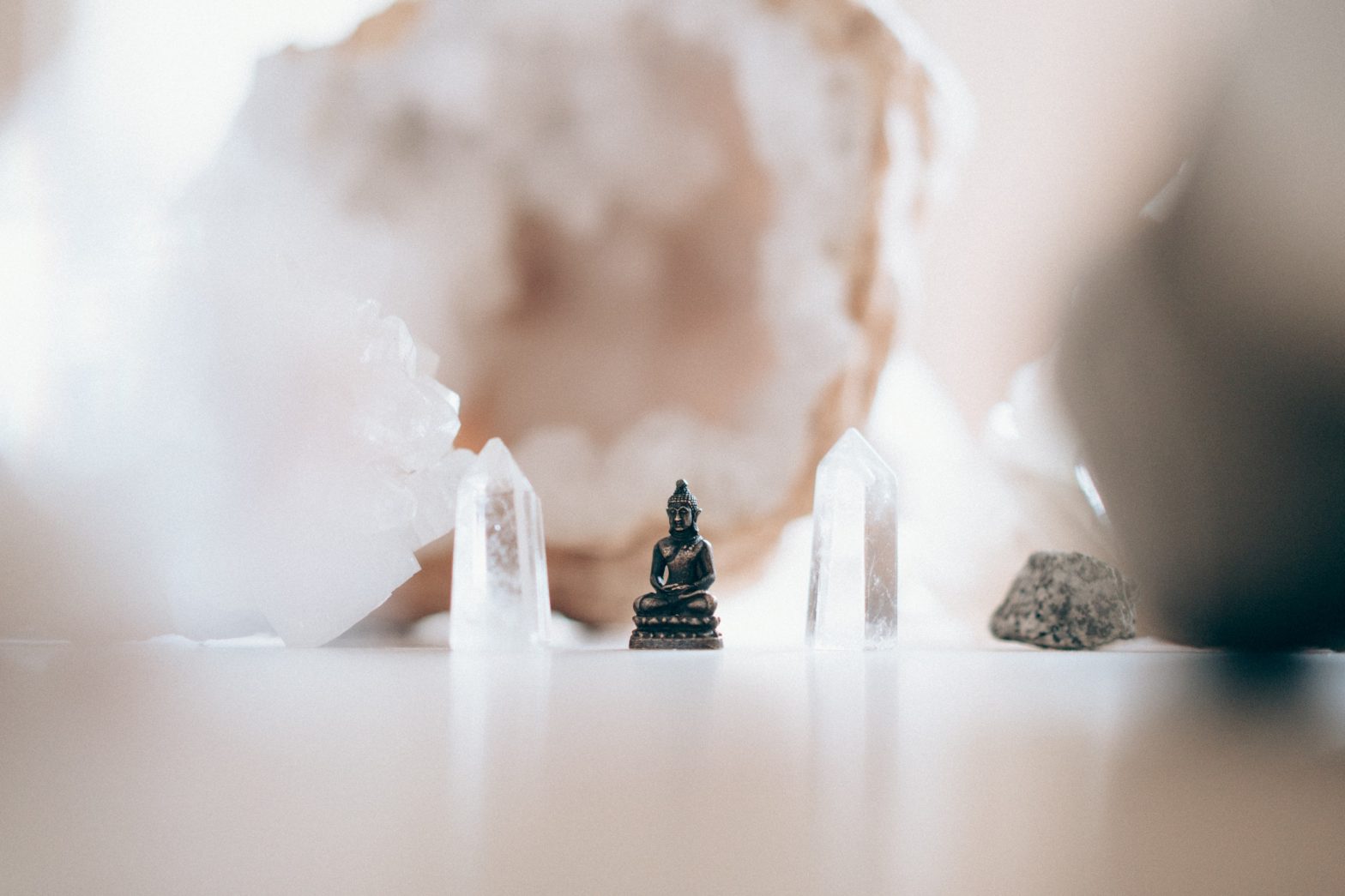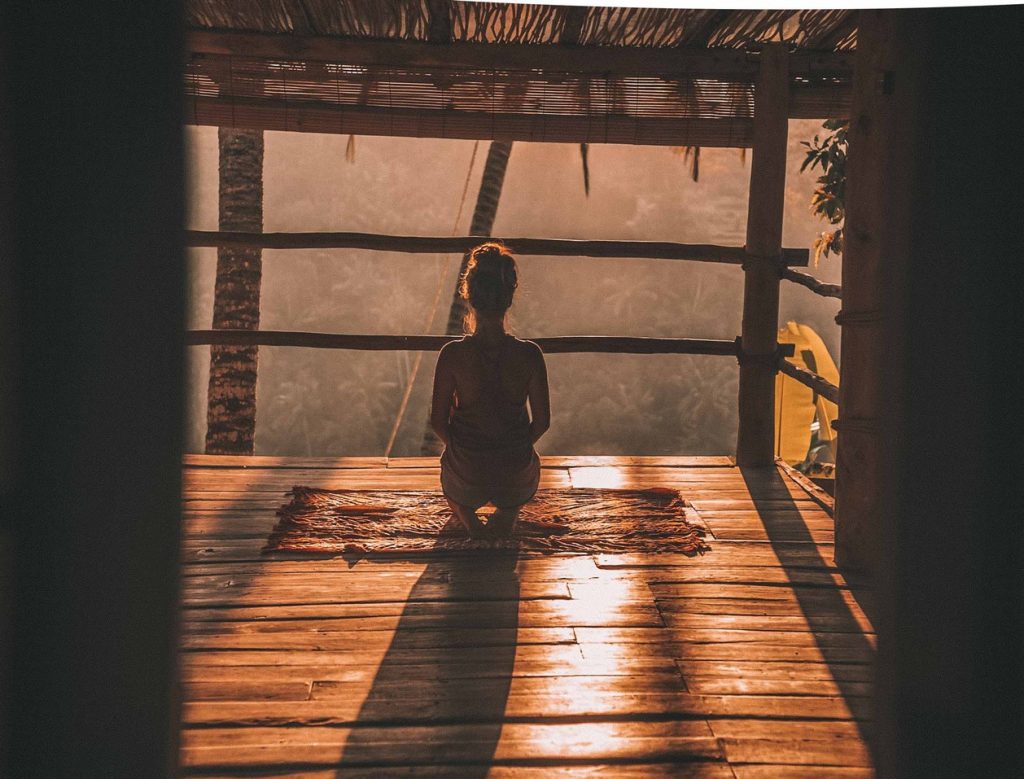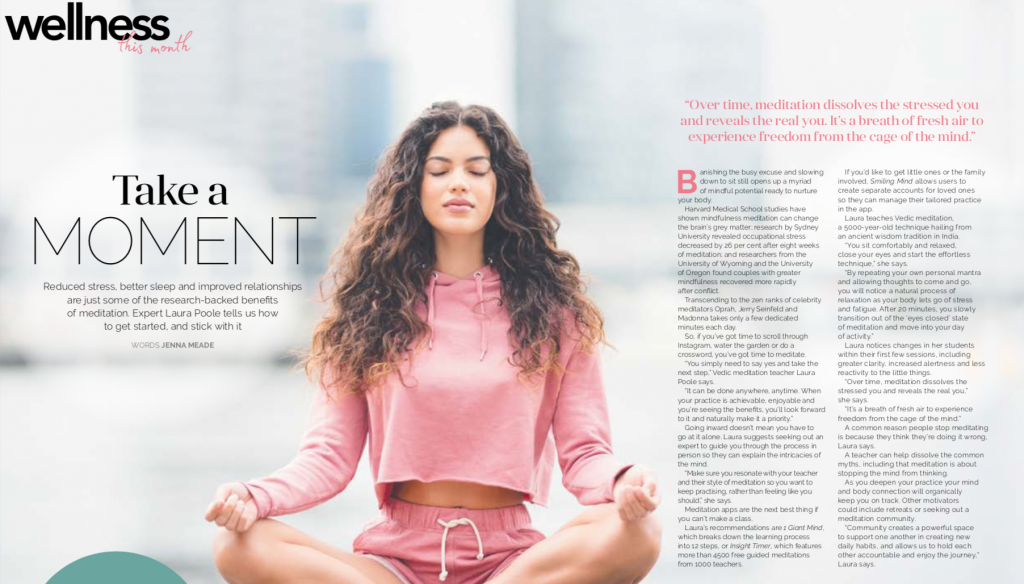Reduced stress, better sleep and improved relationships are just some of the research-backed benefits of meditation. Expert Laura Poole tells us how to get started, and stick with it.
Banishing the busy excuse and slowing down to sit still opens up a myriad of mindful potential ready to nurture your body.
Harvard Medical School studies have shown mindfulness meditation can change the brain’s grey matter; research by Sydney University revealed occupational stress decreased by 26 per cent after eight weeks of meditation; and researchers from the University of Wyoming and the University of Oregon found couples with greater mindfulness recovered more rapidly after conflict.
Transcending to the zen ranks of celebrity meditators Oprah, Jerry Seinfeld and Madonna takes only a few dedicated minutes each day. So, if you’ve got time to scroll through Instagram, water the garden or do a crossword, you’ve got time to meditate.
“You simply need to say yes and take the next step,” Vedic meditation teacher Laura Poole says. “It can be done anywhere, anytime. When your practice is achievable, enjoyable and you’re seeing the benefits, you’ll look forward to it and naturally make it a priority.”
Going inward doesn’t mean you have to go at it alone. Laura suggests seeking out an expert to guide you through the process in person so they can explain the intricacies of the mind.
“Make sure you resonate with your teacher and their style of meditation so you want to keep practising, rather than feeling like you should,” she says.
Meditation apps are the next best thing if you can’t make a class. Laura’s recommendations are 1 Giant Mind, which breaks down the learning process into 12 steps, or Insight Timer, which features more than 4500 free guided meditations from 1000 teachers.
If you’d like to get little ones or the family involved, Smiling Mind allows users to create separate accounts for loved ones so they can manage their tailored practice in the app.
Laura teaches Vedic meditation, a 5000-year-old technique hailing from an ancient wisdom tradition in India.
“You sit comfortably and relaxed, close your eyes and start the effortless technique,” she says. “By repeating your own personal mantra and allowing thoughts to come and go, you will notice a natural process of relaxation as your body lets go of stress and fatigue. After 20 minutes, you slowly transition out of the ‘eyes closed’ state of meditation and move into your day of activity.”
Laura notices changes in her students within their first few sessions, including greater clarity, increased alertness and less reactivity to the little things.
“Over time, meditation dissolves the stressed you and reveals the real you,” she says. “It’s a breath of fresh air to experience freedom from the cage of the mind.”
A common reason people stop meditating is because they think they’re doing it wrong, Laura says. A teacher can help dissolve the common myths, including that meditation is about stopping the mind from thinking.
As you deepen your practice your mind and body connection will organically keep you on track. Other motivators could include retreats or seeking out a meditation community.
“Community creates a powerful space to support one another in creating new daily habits, and allows us to hold each other accountable and enjoy the journey,” Laura says.




